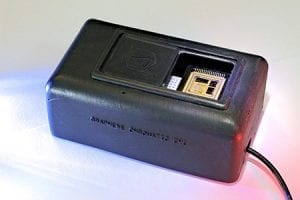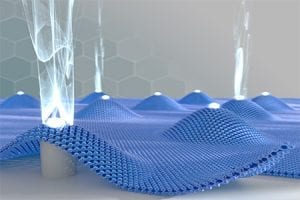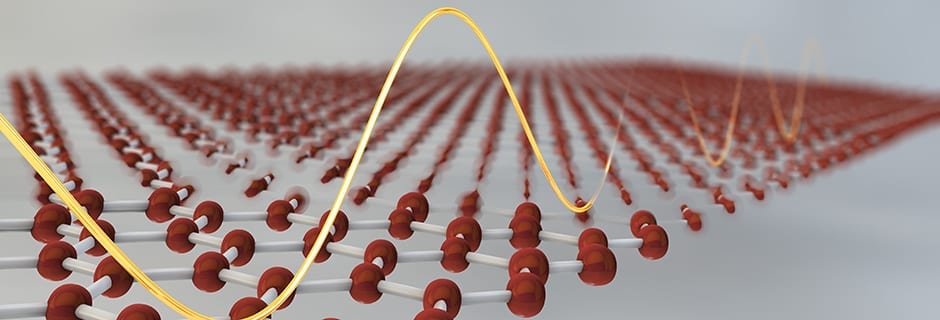Graphene’s excellent electrical and optical properties make it ideal for use in electronics and photonics applications. Terahertz radiation is used in imaging, spectroscopy and security applications.
The EPSRC-supported Graphene Electronics and Optoelectrics project is seeking to develop optoelectrics and applications across a number of areas. It is addressing how the material is made, which is important because, simply, if it cannot be made – economically – then it cannot be used. Depending on how it is made it can be used in batteries and supercapacitors, high-frequency electrical antennae, in optoelectronics and so on.
High-speed, high-capacity communications
“Optoelectronics considers different approaches for the use of graphene,” said Dr Andrea Ferrari, Director of the Cambridge Graphene Centre and of the EPSRC Centre for Doctoral Training in Graphene Technology. “For example, graphene can enable the fabrication of ultrafast and ultra-broad-band lasers, with short pulses, down to less than one thousandth of a billionth of a second”. Graphene also allows ultra-fast and ultra-broad-band modulation and detection of light, with low power consumption, thus facilitating high speed data handling, as required by 5G and the Internet of Things (IoT), whose communications networks need to send data at very high speed and with low energy consumption.
The fact that graphene can interact with light of any and every colour and frequency – at the same time – means that a single optic fibre could carry light of different colours simultaneously, each frequency carrying individual packets of data. It expands the possibilities of lasers to every frequency of light, including the non-visible infra-red and ultra-violet frequencies.

A researcher works in the new clean room at the Cambridge Graphene Centre, where electronic and optoelectronic devices can be fabricated with high-precision equipment.

Intelligent hyperspectral photodetector system that can identify different light conditions – from infrared light, fire, red light, ambient light and ultraviolet. It was fabricated in a collaboration between Emberion, ICFO, CGC within the Graphene Flagship Project.

Localised single-photon emitters can be generated in large arrays in TMD (transition metal dichalcogenides) layers, which could be used in quantum information devices.
Detecting in the dark and seeing through the fog
“A device that can work at different frequencies means that you would be able to see as well during the night as during the day,” he explained. Graphene-based optoelectronic devices could see through the droplets of water in foggy air, as if they weren’t there. “The same camera could take photos in visible, infra-red and UV spectra. It will allow a massive increase in multi-spectrum imagery.” The potential is huge.
Things to come
“There is still a lot of work to be done” he said. “Graphene is the first of over 2000 other layered materials, with properties complementary to those of graphene; they can be semiconductors, for example. The Cambridge Graphene Centre has been investigating these other materials since its start, with a longer-term view on their application”
As well as the EPSRC and the European Union, the Cambridge Graphene Centre has industrial funding, with 40 industry partners, including Nokia, Emberion, Haydale, Huawei, Talga, Flexenable, Versarien and many others.


